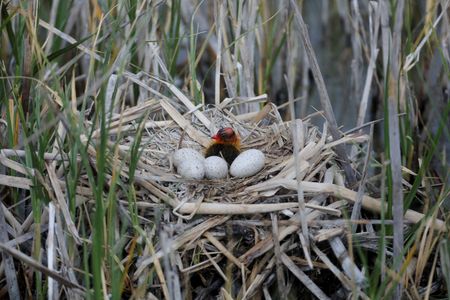By Allison Lampert, Isla Binnie and Virginia Furness
MONTREAL (Reuters) – A landmark deal to protect nature will put biodiversity on the to-do list for businesses and financial firms – creating some red tape but also new opportunities.
The Kunming-Montreal Global Biodiversity Framework, agreed at U.N. talks in the Canadian city, aims to set ground rules to stop and reverse the destruction of ecosystems that support all life on Earth.
Struck in the early hours of Monday morning, it sets out goals including protecting 30% of the world’s land and sea by 2030, as well as finding $200 billion a year to pay for it, much of it from the private sector.
The governments pledged to cut at least $500 billion a year of subsidies that lead to biodiversity degradation by the end of the decade and subsidize more conservation efforts.
Among the wins, asset managers said, was a commitment to align public and private finance flows with the goal of reducing nature loss over the next decade, seen as key to unlocking much-needed capital flows and encourage companies to invest in nature.
Another was the requirement for companies to assess and disclose their impact and reliance on nature, despite the word “mandatory” being dropped from the final deal.
“The reason this is extremely important, apart from (the) 30-by-30 target, is that you will see national-level regulation and legislation, which should be very positive for investors to identify businesses that are monitoring and assessing their risk,” said Ingrid Kukuljan of Federated Hermes.
But in the absence of quantifiable mandatory targets, “this time around we actually need implementation,” Kukuljan added.
Anne Dekker, who works on environmental issues for BHP, the world’s largest mining company, added that the slight softening of language would not stop change, due in part to pressure from investors: “I think it will happen anyway.”
While protecting nature comes at a cost, those companies that step up will attract more investors.
“The big losers across the board will be ‘business as usual’,” said Eurasia Group senior analyst Franck Gbaguidi.
Among the sectors most exposed to tightening rules and oversight are those with a large physical footprint, such as farming, as well as mining and energy or those using dangerous chemicals.
Referring to an agreed target to cut pesticide risk, CropLife International, a trade group whose members include BASF and Bayer, said it should be achievable by making the application of the chemicals more precise.
A body representing some of the world’s largest mining companies, including Glencore and Newcrest, said disclosure would lead to a level playing field between sectors.
“It’s so important that everybody has that understanding of how mining, agriculture, food, retail, oil and gas, how all of our impacts and dependencies stack up against each other,” said Ro Dhawan, chief executive of the International Council on Mining and Metals (ICMM).
$30 BILLION-BY-30
Talks were almost derailed by disagreement on how – and how much – developed countries should pay for conservation in less developed countries. The bill was ultimately calculated at $20 billion per year by 2025 and $30 billion per year by 2030.
Sophie Lawrence, stewardship and engagement lead at Rathbone Greenbank Investments, said “significant concerns” remained over whether this would be enough.
Countries including the densely forested Democratic Republic of Congo also took issue with the existing environmental financing mechanisms, calling for something less bureaucratic.
While pressure for more government money will increase, focus will now shift to how quickly asset managers and banks, and the companies they finance, change their investment decision-making and capital expenditure plans.
The agreement encourages private investors to partner more with public development institutions to increase the flow of finance to nature-friendly projects and for more nature-focused market instruments to be created, such as biodiversity credits.
Doing so will help plug a wide gap: the U.N. environment watchdog said recently that investments to protect and better manage nature need to more than double to $384 billion a year by 2025.
The scope for more money to move in retail funds is also large. Data firm Morningstar shows just 907.6 million euros ($962.8 million) to be invested in the 10 largest equity funds it tracks with biodiversity in their name.
Amid the rush, some sounded a note of caution given the current lack of consensus around what terms like “nature-positive” even mean, creating the risk of “greenwashing”, where firms exaggerate the significance of their activities.
“We all have to be very concerned about nature positive becoming the new vector for greenwashing,” said Tony Goldner, who heads a group developing a framework for companies to report on nature-related risks and opportunities.
($1 = 0.9431 euros)
Read more:
YEARENDER-Pace of new climate, sustainable business rules will not let up
GRAPHIC-ESG funds set for first annual outflows in a decade after bruising year
FACTBOX-Biodiversity finance options grow, but pace of investment still slow
(Reporting by Allison Lampert and Isla Binnie in Montreal and Virginia Furness in London; Additional reporting by Tom Polanesk in Chicago, Timothy Gardner in Washington and Simon Jessop in London; Editing by Lisa Shumaker)




